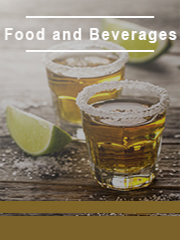TOP CATEGORY: Chemicals & Materials | Life Sciences | Banking & Finance | ICT Media

Download Report PDF Instantly
Report overview
The global Dairy Blends market was valued at US$ 2367.4 million in 2022 and is projected to reach US$ 3199.1 million by 2029, at a CAGR of 4.4% during the forecast period. The influence of COVID-19 and the Russia-Ukraine War were considered while estimating market sizes.
The dairy blends market, based on type, has been segmented into dairy mixtures, dairy/non-dairy ingredients, dairy as functional ingredient, dairy as carrier, and Others. Dairy/non-dairy ingredients accounted for a largest market share in 2015. This type has a wide range of applications in different industries such as infant formula, dairy formulations, bakery, Others dairy products, nutritional bars/nutritional formula, cocoa, and confectionery.
This report aims to provide a comprehensive presentation of the global market for Dairy Blends, with both quantitative and qualitative analysis, to help readers develop business/growth strategies, assess the market competitive situation, analyze their position in the current marketplace, and make informed business decisions regarding Dairy Blends. This report contains market size and forecasts of Dairy Blends in global, including the following market information:
The market, based on application, has been segmented into ice cream, yogurt, infant formula, bakery, feed, butter & cheese blends, beverages, and Others. The bakery segment accounted for the largest share of the market in 2015. Increase in health-consciousness, is fueling the demand for low-calorie bakery products among consumers. This is expected to drive the market for dairy blends as functional ingredients in this particular segment. Dairy blends are cost-effective alternatives to butter, with lower fat content, and do not have the negative impact on the taste of the products like margarine does. Hence, their demand in the bakery industry as a replacement for these two ingredients is increasing.
We surveyed the Dairy Blends manufacturers, suppliers, distributors and industry experts on this industry, involving the sales, revenue, demand, price change, product type, recent development and plan, industry trends, drivers, challenges, obstacles, and potential risks.
Global Dairy Blends Market, by Type, 2018-2023, 2024-2029 ($ Millions) & (K MT)
Global Dairy Blends Market Segment Percentages, by Type, 2022 (%)
Global Dairy Blends Market, by Application, 2018-2023, 2024-2029 ($ Millions) & (K MT)
Global Dairy Blends Market Segment Percentages, by Application, 2022 (%)
Global Dairy Blends Market, By Region and Country, 2018-2023, 2024-2029 ($ Millions) & (K MT)
Global Dairy Blends Market Segment Percentages, By Region and Country, 2022 (%)
The report also provides analysis of leading market participants including:
Key companies Dairy Blends revenues in global market, 2018-2023 (Estimated), ($ millions)
Fonterra Co-Operative Group Limited
Cargill
Outline of Major Chapters:
Chapter 1: Introduces the definition of Dairy Blends, market overview.
Chapter 2: Global Dairy Blends market size in revenue and volume.
Chapter 3: Detailed analysis of Dairy Blends manufacturers competitive landscape, price, sales and revenue market share, latest development plan, merger, and acquisition information, etc.
Chapter 4: Provides the analysis of various market segments by type, covering the market size and development potential of each market segment, to help readers find the blue ocean market in different market segments.
Chapter 5: Provides the analysis of various market segments by application, covering the market size and development potential of each market segment, to help readers find the blue ocean market in different downstream markets.
Chapter 6: Sales of Dairy Blends in regional level and country level. It provides a quantitative analysis of the market size and development potential of each region and its main countries and introduces the market development, future development prospects, market space of each country in the world.
Chapter 7: Provides profiles of key players, introducing the basic situation of the main companies in the market in detail, including product sales, revenue, price, gross margin, product introduction, recent development, etc.
Chapter 8: Global Dairy Blends capacity by region & country.
Chapter 9: Introduces the market dynamics, latest developments of the market, the driving factors and restrictive factors of the market, the challenges and risks faced by manufacturers in the industry, and the analysis of relevant policies in the industry.
Chapter 10: Analysis of industrial chain, including the upstream and downstream of the industry.
Chapter 11: The main points and conclusions of the report.